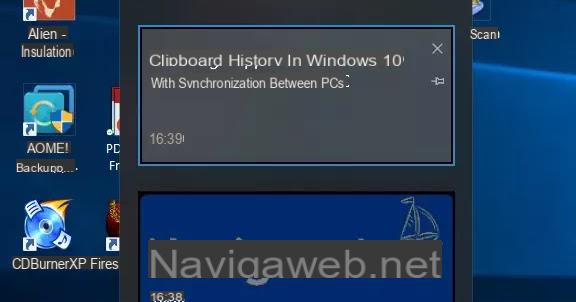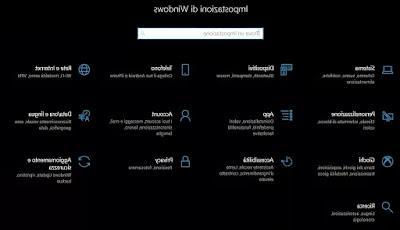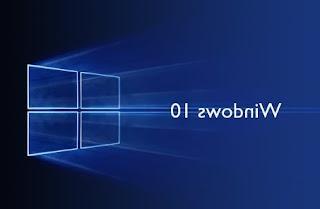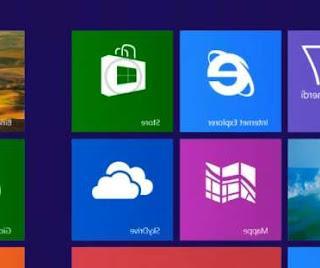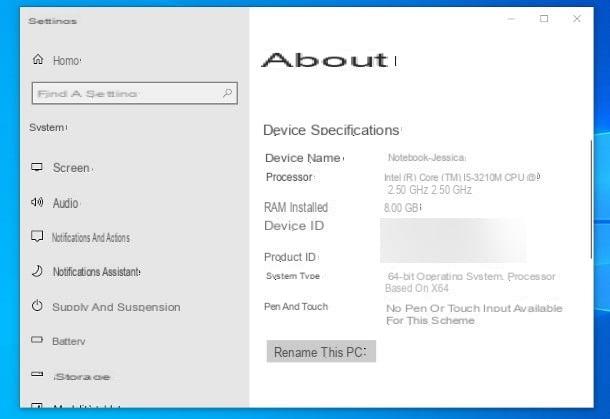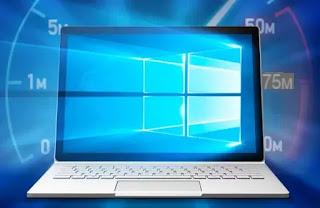 Since working with a slow internet connection wastes time and impairs work productivity, it's important to make sure this doesn't happen.
Since working with a slow internet connection wastes time and impairs work productivity, it's important to make sure this doesn't happen.There are several reasons why the internet is slow and in most cases the fault lies with the telephone company providing slow speed due to problems beyond our control.
As far as we are concerned, however, we must ensure that the connection on our computer is not slowed down by incorrect configurations of the system, programs and network settings.
While in another article we saw how to solve slow internet connection problems, on this occasion we find out instead how to improve internet speed on windows 10, changing some configurations that could adversely affect network performance, mainly related to bandwidth usage by many background services.
1) The first configuration to change in Windows 10 to improve internet speed is that of disable the QoS service throttling.
Windows 10, in fact, reserves 20% of its bandwidth for some internal services such as Windows Update.
This change can be made from the Local Group Policy editor, which in all versions of Windows, except the Home ones, is opened from the start menu by searching for the command gpedit.msc.
From the Gpedit console, navigate the menu on the right side by expanding the following path:
Computer Configuration> Administrative Templates> Network> QoS Packet Scheduler.
On the left side, double click on the Limit reservable bandwidth row and in the window that opens, click on Enabled.
Before pressing OK, write the number 0 in the Bandwidth limit% box.
To learn more about this change, refer to the guide on the options that limit the internet bandwidth to be deactivated in Windows, which also explains how to deactivate autotuning.
2) Disable the apps in the backgfround
In Windows 10, there are many applications running in the background that use the internet connection, slowing it down for the programs used.
The solution is to turn off those background apps and save bandwidth to get a faster internet connection.
To do this, go to Settings> Privacy and press on Background apps from the left pane.
At this point it is possible to disable the main switch or turn off the various apps one by one, leaving active only those that are actually used.
2 to) Close bandwidth-consuming background processes
In addition to apps, there may be processes and programs running on your PC that consume network bandwidth.
Some examples are the Torrent client, Steam, EA Origin, Antivirus, Adobe Reader Updates or other similar programs.
In Windows 10, you must then open the task manager by pressing the CTRL-Shift-ESC keys together, go to the Startup tab and disable the automatic start of all programs that can download from the internet in the background.
at the next restart of the computer, these will no longer be active, but can be opened manually when needed.
3) Change DNS and use Google DNS
This may not improve internet speed because it all depends on the DNS server you are currently using, but it is still a change that I personally make on each computer, both because Google DNS are among the fastest, and because setting international DNS servers and non-Americans bypass some restrictions.
In another article it is explained in detail how to use Google DNS 8.8.8.8 to browse fast, free and without censorship.
3 bis) Flush DNS
The PC keeps a list of frequently opened sites and their IP addresses and is kept in the DNS Resolver cache.
Sometimes, to get rid of the obsolete data on this list, it can be good to delete them.
This can slow down the connection initially because the PC will need to look up the DNS for each site, but after a while the internet connection should become faster.
To do this cleanup, go to the command prompt and run the ipconfig / flushdns command and press Enter.
4) Close the Windows 10 peer-to-peer update process
While it is not recommended to turn off the Windows Update service, you can keep it from slowing down your internet connection by turning off "seeeding" which puts computers around the world in peer-to-peer communication for faster delivery of updates.
The option is located in Settings> Update and security> Windows Update, then on the right side click on Advanced options and then on Delivery optimization.
From this window, disable the option to allow downloads from other PCs.
5) Disable the Windows 10 feature Large Send Offload or LSO
LSO is supposed to improve overall network performance in Windows, but it allows background applications to consume a considerable amount of network bandwidth.
To deactivate it, open the device manager by pressing the right mouse button on the Start menu.
Among all the devices listed, expand the "Network adapters" section, right click on the network adapter used to connect the computer to the internet and go to Properties.
Then select the "Advanced" tab, locate the item select "Large Send Offload (IPv4)" and set the value to Disabled.
Press OK and exit.
6) Reset the network
If the internet seems to be getting slow, one of the first things to do is to reset the network settings that may be compromised.
To do this, in Windows 10, just go to Settings> Network and Internet, in the Status section, and press Network Reset on the right side.
7) Delete temporary files and internet browser cache
To perform a cleaning of the browser temporary files that can, if too many, slow down the loading of websites, the ideal program to use is Ccleaner, which does all the cleaning operations with one click, without errors and without risks.
8) Disable autotuning
This setting is one of those that limit the internet bandwidth to be deactivated in Windows.
Finally, I remember the guide for optimize the ADSL internet connection and the TCP / IP network for faster surfing
Improve internet speed in Windows 10








